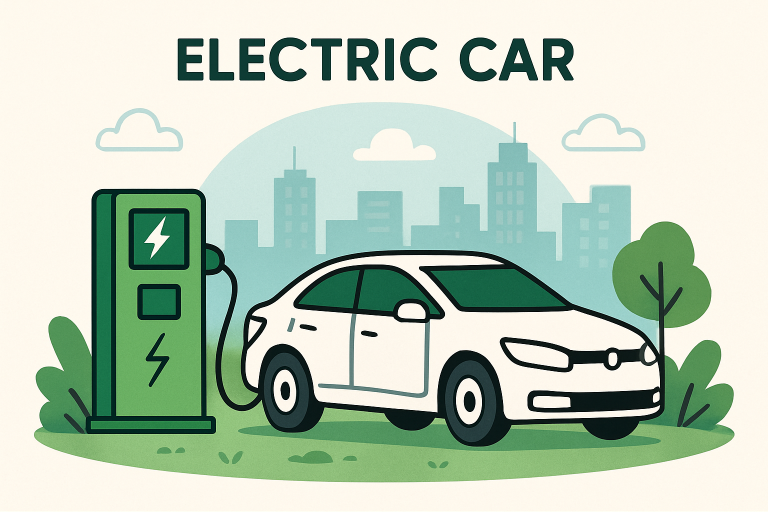Electric and hybrid vehicles have become driving forces in the automotive industry, fundamentally changing what it means to get behind the wheel. Enhanced efficiency, reduced emissions, and the advent of new driving technologies are sparking a shift toward sustainability and innovation on the road. By leveraging advanced powertrains and connectivity, drivers experience benefits that reach far beyond the initial appeal of fuel savings. Explore additional insights and dealership resources here to learn more about the rise of electric and hybrid vehicles and available options.
This article explores how improvements in battery technology, widespread charging infrastructure, and integration of smart features are making electric mobility both attainable and rewarding. These advancements not only support a cleaner environment but also provide consumers with economic and practical incentives to make the switch.
Table of Contents
Enhanced Fuel Efficiency and Performance
Electric and hybrid cars are redefining efficiency standards. Unlike traditional vehicles that rely solely on gasoline engines, hybrids utilize electric and combustion engines to optimize energy use. Plug-in hybrid and all-electric models further reduce fuel dependency by maximizing electric miles, translating to fewer visits to the pump and lower long-term costs for owners. Market leaders now routinely surpass the fuel economy of internal combustion vehicles, delivering smooth and responsive acceleration thanks to instant electric torque.
Advancements in Battery Technology
The heart of modern electric vehicles lies in their batteries. Technological breakthroughs in lithium-ion chemistry and design have led to batteries that are lighter, last longer, and charge faster. Improved range—often exceeding 300 miles on a single charge for new EVs—has addressed many of the early adoption hurdles. Furthermore, fast-charging capabilities are putting long-distance travel well within reach. These advancements are helping broaden the appeal of electric vehicles, making them practical even for drivers with demanding commutes or travel needs. According to recent coverage in Reuters, manufacturers continue to invest in battery innovation, seeking to further drive down costs and boost capacity.
Expansion of Charging Infrastructure
One of the most significant trends fueling electric vehicle adoption is the rapid rise in charging station availability. No longer limited to home outlets, today’s EV owners enjoy access to expanding networks of public charging points across supermarkets, workplaces, highways, and city centers. Governments and private companies are investing heavily to close infrastructure gaps and reduce range anxiety for drivers. In cities worldwide, it’s becoming as common to see an EV charging bay as it is to spot a gas station, marking a major milestone on the path to mainstream electric mobility. This dedication to accessible chargers makes electric cars more accommodating and appealing.

Integration of Smart Technologies
Electric and hybrid cars serve as platforms for cutting-edge technologies. Many new models feature advanced driver-assistance systems (ADAS), wireless software updates, and seamless integration with smartphones. Remote monitoring, pre-conditioning (warming or cooling the car via an app), and real-time navigation that factors in available charging stops contribute to a sophisticated driving experience. These digital features improve convenience and comfort and boost overall vehicle safety. According to Consumer Reports, the rapid evolution of smart car features is reshaping consumer expectations industry-wide.
Environmental Impact
Reducing environmental impact is a core motivation for the electric vehicle movement. Electric cars make a significant difference in air quality by producing zero tailpipe emissions, especially in urban areas facing pollution challenges. Hybrids, although still using some gasoline, dramatically cut emissions compared to traditional models. As renewable energy sources like solar and wind increasingly feed the grid, the overall carbon footprint of EVs continues to shrink over time. Cleaner air, lower greenhouse gas output, and the reduction of harmful particulates are real and measurable outcomes tied to widespread EV adoption.
Economic Benefits
While electric vehicles may have higher sticker prices, their total cost of ownership often proves more favorable. Drivers save substantially on fuel, and because EVs have fewer moving parts, maintenance expenses are typically lower than those for internal combustion models. Reduced brake wear thanks to regenerative braking, no oil changes, and fewer engine-related repairs means less time and money spent at the shop. On top of these savings, many governments worldwide provide financial incentives or tax rebates for EV and hybrid buyers, easing the path toward cleaner transport.
Consumer Adoption Trends
Drivers are embracing these advanced vehicles in record numbers. Hybrid car sales in the United States surpassed 1 million units in 2023, signaling widespread confidence in electrified transport. EV and hybrid offerings continue to diversify, serving a range of price points, body styles, and performance needs. As buyers seek out sustainable options that fit their lifestyles, automakers are ramping up production and investing in new platforms designed from the ground up for electrification. The momentum behind electrified vehicles is only expected to accelerate as cost, range, and charging all continue to improve.
Future Outlook
The trajectory for electric and hybrid vehicles points to even greater innovation and accessibility. Automakers are competing to advance battery tech, streamline production, and expand partnerships with charging infrastructure providers. Fleets, ridesharing programs, and public transportation increasingly shift toward electrification, further reducing collective environmental impact. As governments implement stricter emissions regulations and offer ongoing incentives, the path to widespread electric mobility seems inevitable. Soon, what’s considered cutting-edge today will be the standard for tomorrow’s drivers.
Electric and hybrid vehicles are not simply a trend—they represent the future of everyday driving. With their blend of efficiency, cutting-edge technology, and sustainability, these cars offer tangible improvements for motorists and the planet alike.